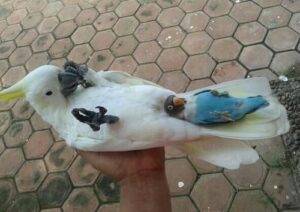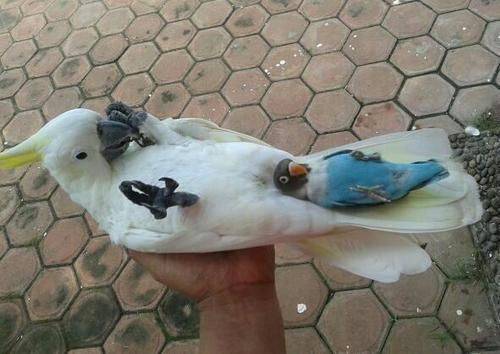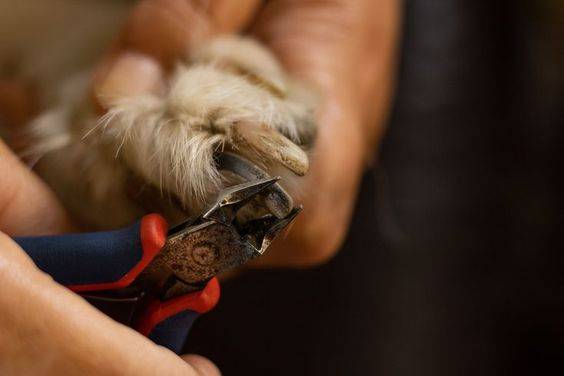Train a bird can be a rewarding and enriching experience for both you and your feathered friend. Whether you are a new bird owner or an experienced avian enthusiast, the process of training requires patience, consistency, and understanding of bird behavior. In this comprehensive guide, we will walk you through the essential steps and techniques to successfully train a bird, ensuring a positive and enjoyable experience for both of you.

Understanding Your Bird’s Behavior
Before diving into the training process, it is crucial to understand your bird’s behavior. Birds are intelligent and social creatures with unique personalities. Observing your bird’s behavior can help you tailor your training approach to suit its needs and preferences.
- Body Language: Learn to read your bird’s body language. Signs of comfort include relaxed feathers, playful behavior, and vocalizations. Conversely, signs of stress or discomfort include fluffed feathers, aggressive postures, and repetitive movements.
- Bonding: Spend time bonding with your bird. Speak softly, offer treats, and engage in gentle interactions to create a positive relationship.
- Individual Preferences: Each bird has its own likes and dislikes. Some birds may prefer certain treats, toys, or activities. Understanding these preferences can make training sessions more effective and enjoyable.
Setting Up the Training Environment
Creating a conducive training environment is essential for effective learning. Here are some tips to set up an ideal space for bird training:
- Quiet Space: Choose a quiet, distraction-free area for training sessions. Loud noises and interruptions can cause stress and hinder progress.
- Safety: Ensure the training area is safe for your bird. Remove any potential hazards, such as toxic plants, open windows, or sharp objects.
- Consistency: Train a bird in the same location consistently. Familiarity with the training environment can help your bird feel more comfortable and focused.
- Training Tools: Gather necessary training tools such as treats, clickers, and perches. Having everything within reach can make training sessions smooth and efficient.
Basic Training Techniques
Positive Reinforcement:
Positive reinforcement is the most effective and humane method for train a bird.
- Choose the Right Treats: Select small, healthy treats that your bird loves. Common options include millet spray, sunflower seeds, or small pieces of fruit.
- Timing: This helps your bird associate the behavior with the reward.
- Consistency: Be consistent with your rewards. Always reward the desired behavior to reinforce the connection.
Clicker Training:
Clicker training is a popular method that uses a small device that makes a clicking sound to mark desired behaviors. The clicker sound serves as a precise indicator that the bird has performed the correct action, followed by a reward.
- Introduction: Start by associating the clicker sound with treats. Repeat this several times until your bird associates the click with a reward.
- Marking Behaviors: Once your bird understands the click-treat association, use the clicker to mark desired behaviors. For example, if you want to train a bird to step up onto your finger, click the moment it makes contact and then offer a treat.
- Gradual Training: Break down complex behaviors into smaller steps. Use the clicker to mark and reward each step, gradually shaping the final behavior.
Target Training:
Target training involves using a target stick (such as a small wooden dowel or a chopstick) to guide your bird’s movements. This technique is useful for teaching your bird to follow directions and move to specific locations.
- Introduction: Introduce the target stick by placing it near your bird. When your bird touches the stick with its beak, click and reward.
- Guiding Movement: Use the target stick to guide your bird to different locations. For example, you can train a bird to move from one perch to another by following the target stick.
- Shaping Behaviors: Gradually use the target stick to shape more complex behaviors, such as flying to your hand or stepping onto a scale.
Teaching Basic Commands
Step-Up Command:
Teaching your bird to step up onto your hand or a perch is one of the most fundamental commands. It establishes trust and allows for easier handling.
- Approach Slowly: Hold your hand or a perch near your bird’s chest, just above its feet. Speak softly to reassure your bird.
- Encourage Movement: Gently press against your bird’s lower chest to encourage it to step onto your hand or the perch.
- Reward: As soon as your bird steps up, click (if using clicker training) and offer a treat.
Step-Down Command:
The step-down command is equally important, as it teaches your bird to step off your hand or perch onto another surface.
- Prepare the Surface: Choose a stable surface where you want your bird to step down. This could be another perch, a table, or a designated play area.
- Encourage Movement: Hold your hand or perch near the surface and gently encourage your bird to step onto it.
- Reward: As soon as your bird steps down, click and offer a treat.
Recall Training:
Recall train a bird to come to you when called. This command is particularly useful for ensuring your bird’s safety and fostering a strong bond.
- Start Close: Begin recall training by standing close to your bird. Use a consistent verbal cue, such as “come” or “here,” while holding a treat.
- Encourage Movement: When your bird moves towards you, click and reward. Gradually increase the distance as your bird becomes more confident.
- Practice Regularly: Regular practice is essential for successful recall training. Use positive reinforcement to make the experience enjoyable for your bird.
Addressing Common Challenges
Train a bird can come with its own set of challenges. Understanding and addressing these challenges can help you overcome obstacles and ensure a successful training process.
Fear and Anxiety:
Birds may exhibit fear or anxiety during training, especially if they are not used to human interaction or new environments.
- Take It Slow: Gradually introduce new training environments and tools. Allow your bird to explore and become comfortable at its own pace.
- Positive Experiences: Create positive associations with training by offering treats, praise, and gentle interactions.
Biting:
Biting is a common issue that can arise during training. Understanding the underlying causes and addressing them can help mitigate this behavior.
- Identify Triggers: Observe what triggers your bird to bite. Common triggers include fear, overstimulation, or territorial behavior.
- Redirect Behavior: If your bird bites, calmly redirect its attention to a toy or treat. Avoid reacting with fear or anger, as this can reinforce the behavior.
- Reinforce Positive Behavior: Reward calm and non-aggressive behavior with treats and praise. Consistency is key to reducing biting incidents.
Short Attention Span:
Birds can have short attention spans, making it challenging to maintain focus during training sessions.
- Keep Sessions Short: Limit training sessions to 5-10 minutes to prevent boredom and frustration.
- Frequent Breaks: Allow your bird to take breaks between sessions to rest and play. This can help maintain its interest and enthusiasm.
Inference
Train a bird is a journey that requires patience, consistency, and a deep understanding of avian behavior. By creating a positive training environment, using effective techniques, and addressing challenges, you can successfully train a bird and foster a strong, trusting bond. Remember that each bird is unique, and the key to successful training lies in tailoring your approach to suit your bird’s individual needs and preferences. With dedication and love, you can unlock your bird’s full potential and enjoy a rewarding companionship.







